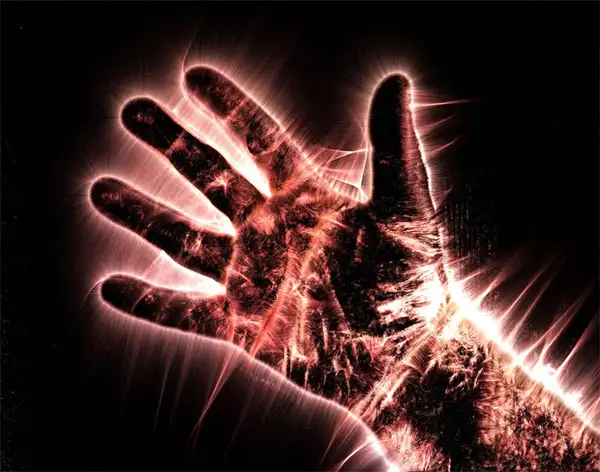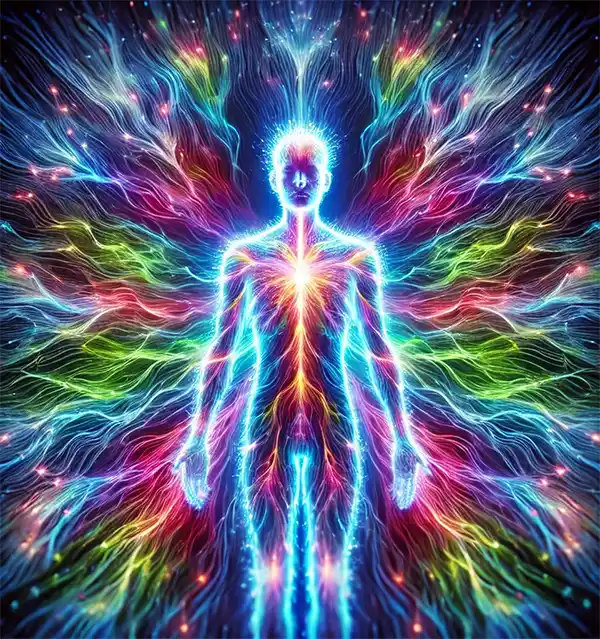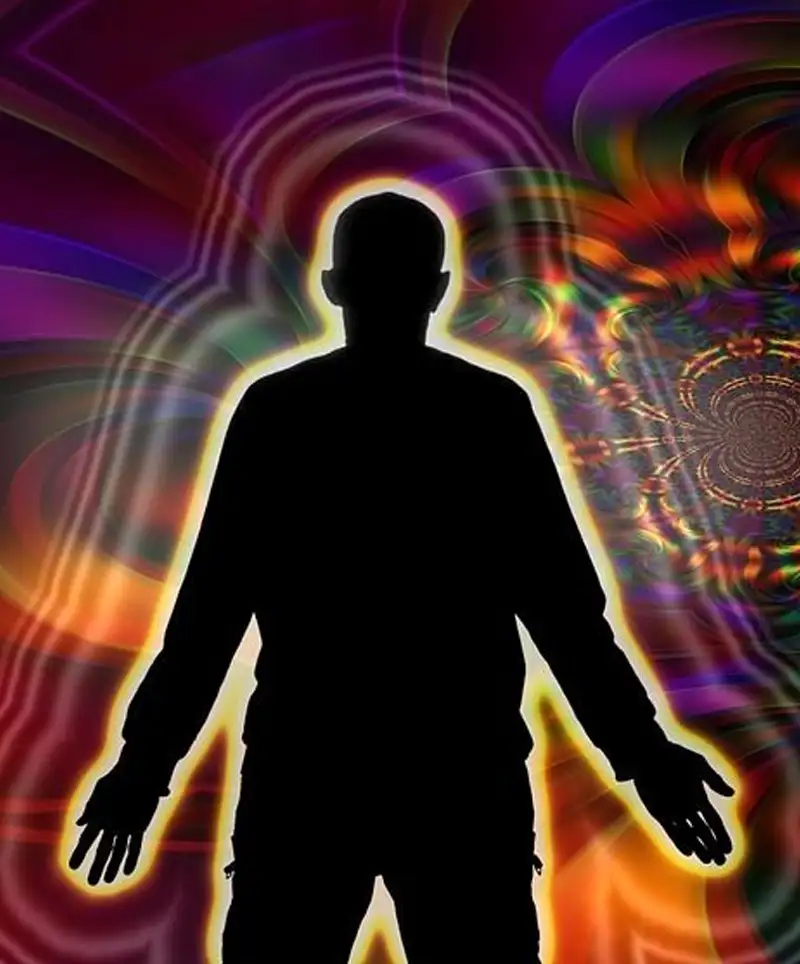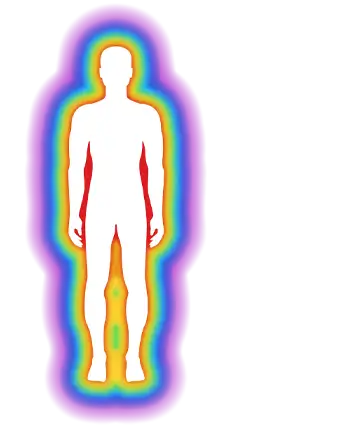Celebrating the Mysteries of the Aura
Every year, Aura Awareness Day beckons us into a mesmerizing journey through the vibrant world of human energy fields. It's a day that transcends the ordinary, drawing back the veil on the extraordinary concept of auras. These are not just mere fields but dynamic, colorful halos believed to encircle each person, pulsating with the rhythms of our emotions, spirituality, and physical vitality. They paint a kaleidoscope of human existence, visible to some and felt by many. This day serves as a beacon, illuminating the profound and often overlooked aspects of our being and inviting us to explore the depths of our inner worlds. It's a day where the invisible becomes visible, where the intangible gets its moment in the spotlight, encouraging us to ponder and appreciate the remarkable interplay of energy that makes up our very essence.
The Science and Spirituality of Auras
 The concept of auras, a staple in spiritual and holistic traditions, occupies a unique space where science and spirituality often intersect and occasionally clash. At its core, an aura is thought to be an emanation of energy, a colorful, radiant field that surrounds individuals, mirroring their emotional state, physical health, and spiritual well-being.
The concept of auras, a staple in spiritual and holistic traditions, occupies a unique space where science and spirituality often intersect and occasionally clash. At its core, an aura is thought to be an emanation of energy, a colorful, radiant field that surrounds individuals, mirroring their emotional state, physical health, and spiritual well-being.
From a scientific viewpoint, the existence of auras is contentious. Mainstream science typically requires measurable, repeatable evidence, and auras often elude such empirical validation. However, this has not deterred some researchers and practitioners from attempting to study them using scientific methods.
- Biofield Science: Some scientists have delved into the study of biofields – fields of energy and information that are said to surround and permeate the human body. This area of research, while still emerging, seeks to understand how these energy fields might interact with physical and mental health.
- Electromagnetic Fields: Every living being emits a weak electromagnetic field, a fact well established in science. The hypothesis posited by some aura enthusiasts is that these fields could manifest visually as auras, changing with alterations in one's emotional or physical state.
- Kirlian Photography: Often brought into discussions about auras, Kirlian Photography captures what appears to be a colorful emanation around objects, particularly organic ones. Although scientists typically attribute these images to moisture content and electrical coronal discharges, some interpret these images as photographic evidence of auras.
Skepticism and Alternative Explanations
The skepticism surrounding the concept of auras primarily hinges on the absence of consistent, empirical evidence that can withstand the rigors of scientific scrutiny. This skepticism is not just a dismissal but a critical perspective that seeks to understand the phenomenon through alternative, more conventional explanations.
- Synesthesia: A key argument posited by skeptics relates to synesthesia. In this well-documented neurological condition, stimulation of one sensory pathway leads to automatic, involuntary experiences in a second sensory pathway. For instance, some individuals with synesthesia might see specific colors when they hear certain sounds or experience emotions. Skeptics argue that what some perceive as auras could be a form of synesthesia, where emotional or sensory stimuli trigger visual experiences of color around individuals.
- Optical Illusions: Another explanation offered is the prevalence of optical illusions. The human visual system can sometimes be tricked into seeing things that aren't there, especially under certain lighting conditions or when staring at an object or person for an extended period. This prolonged concentration can lead to afterimages or color shifts, which might be misconstrued as seeing an aura.
- Neurological Conditions: Certain neurological conditions, such as migraines or epilepsy, can sometimes manifest visual disturbances that resemble aura perceptions. These conditions can cause various visual symptoms, including seeing spots, flashes of light, or halos around objects, leading some individuals to believe they are perceiving auras.
Cultural and psychological factors also influence the perception of auras. In cultures or communities where auras are widely accepted, individuals might be more inclined to believe they can see or sense them, influenced by suggestion and the power of belief. This psychological aspect, the placebo effect or confirmation bias, can lead people to interpret ambiguous visual experiences as auras, reinforcing their preexisting beliefs.
The Challenge of Subjective Experiences
A significant challenge in debunking or validating auras lies in the highly subjective nature of the experience. Unlike phenomena that can be uniformly measured or observed, auras, if they exist, appear to be highly individualistic and subjective. This subjectivity makes applying standard scientific verification methods difficult, as experiences vary greatly between individuals and are often not replicable in controlled environments.
 The skepticism regarding auras, backed by alternative explanations from psychological, neurological, and optical sciences, presents a compelling counterpoint to the mystical interpretation of auras. While these explanations do not conclusively disprove the existence of auras, they offer a more grounded perspective, highlighting the complex interplay between the brain, perception, and cultural influences in shaping our understanding of this enigmatic phenomenon.
The skepticism regarding auras, backed by alternative explanations from psychological, neurological, and optical sciences, presents a compelling counterpoint to the mystical interpretation of auras. While these explanations do not conclusively disprove the existence of auras, they offer a more grounded perspective, highlighting the complex interplay between the brain, perception, and cultural influences in shaping our understanding of this enigmatic phenomenon.
The Intersection of Spirituality and Science
The Spiritual Significance of Auras
Despite the skepticism from scientific circles, the concept of auras holds profound spiritual significance. In numerous spiritual practices and belief systems, the aura is more than just an ephemeral glow; it is a sacred manifestation of one's life force or energy. This belief is not confined to any single culture or philosophy but spans millennia and various civilizations.
- Ancient Wisdom and Modern Beliefs: From the East's mystical teachings to the West's esoteric traditions, the idea of an energy field surrounding the human body has been a recurring theme. In Hinduism and Buddhism, auras are often linked to the chakras, the body's energy centers, each associated with different aspects of our physical, emotional, and spiritual well-being. Similarly, in Western mystical traditions, the aura reflects the state of the soul, its colors and intensity offering insights into one's spiritual development.
- A Symbol of Holistic Health: In many spiritual practices, the aura is seen as a barometer of health, with its colors and patterns believed to indicate physical, emotional, and spiritual conditions. Holistic healers often claim to read auras as a way of diagnosing and treating imbalances, viewing it as an integral part of the healing process.
The Scientific Exploration of Spiritual Concepts
While mainstream science often regards the concept of auras with skepticism, there has been a growing interest in exploring the intersection of spirituality and science. This convergence seeks to understand how spiritual beliefs and practices, like those involving auras, might have tangible effects on physical and mental health.
- Mind-Body Connection: Modern science acknowledges the strong connection between the mind and body. Research in psychoneuroimmunology (PNI) has shown how psychological factors can impact the immune system, and studies in meditation and mindfulness have demonstrated measurable changes in brain activity and stress levels. These findings open doors to considering how spiritual practices, including those focusing on auras, might influence health and well-being.
- The Study of Consciousness: Exploring human consciousness has brought scientists and spiritual practitioners together. Some researchers are investigating whether the energy fields posited by spiritual traditions have a basis in our understanding of consciousness and whether these fields can be influenced by or can influence our mental states.
The ongoing dialogue between spirituality and science in understanding auras represents a broader quest to integrate ancient wisdom with modern knowledge. This intersection is not about proving or disproving spiritual beliefs but expanding our understanding of the human experience. It acknowledges that while scientific inquiry and spiritual insight come from different paradigms, they both contribute valuable perspectives on the nature of reality.
The aura's enduring presence in both spiritual practices and the fringes of scientific exploration highlights its significance as a symbol of the interconnectedness of mind, body, and spirit. As a subject of fascination and reverence, the aura invites us to consider the deeper dimensions of our existence and the potential for a more integrated approach to understanding the mysteries of the human condition.
The study of auras sits at a fascinating crossroads of science and spirituality. While empirical evidence is limited and skepticism is high, the interest in auras as both a spiritual symbol and a potential field of scientific inquiry persists. Aura Awareness Day thus becomes a celebration of a mystical concept and a call for open-minded exploration in the realms of science and spirituality.
A significant aspect of Aura Awareness Day is the spotlight on Kirlian Photography. Developed by Semyon Kirlian in the 20th century, this photographic technique is said to capture the electrical coronal discharges of subjects, often interpreted as visualizing their auras. Although scientists debate its efficacy in capturing life energy, Kirlian Photography remains a fascinating intersection of art and science, offering a unique perspective on the unseen energies that some believe surround us.
 Activities and Practices
Activities and Practices
Participants in Aura Awareness Day engage in various activities to connect with and understand their auras. These include meditation, yoga, and energy healing sessions, which are believed to cleanse and balance the aura. Additionally, workshops on reading auras and the use of Kirlian Photography are popular, providing insights into this enigmatic phenomenon.
Aura Awareness Day presents an opportunity to explore the enigmatic concept of human auras. Whether one views it through a spiritual, holistic lens or approaches it with scientific curiosity, this day encourages an open-minded exploration of one of the most captivating aspects of human existence.
Please Share our Content






 The concept of auras, a staple in spiritual and holistic traditions, occupies a unique space where science and spirituality often intersect and occasionally clash. At its core, an aura is thought to be an emanation of energy, a colorful, radiant field that surrounds individuals, mirroring their emotional state, physical health, and spiritual well-being.
The concept of auras, a staple in spiritual and holistic traditions, occupies a unique space where science and spirituality often intersect and occasionally clash. At its core, an aura is thought to be an emanation of energy, a colorful, radiant field that surrounds individuals, mirroring their emotional state, physical health, and spiritual well-being. The skepticism regarding auras, backed by alternative explanations from psychological, neurological, and optical sciences, presents a compelling counterpoint to the mystical interpretation of auras. While these explanations do not conclusively disprove the existence of auras, they offer a more grounded perspective, highlighting the complex interplay between the brain, perception, and cultural influences in shaping our understanding of this enigmatic phenomenon.
The skepticism regarding auras, backed by alternative explanations from psychological, neurological, and optical sciences, presents a compelling counterpoint to the mystical interpretation of auras. While these explanations do not conclusively disprove the existence of auras, they offer a more grounded perspective, highlighting the complex interplay between the brain, perception, and cultural influences in shaping our understanding of this enigmatic phenomenon. Activities and Practices
Activities and Practices











 "Sláinte!" is a traditional Irish expression used as a toast, equivalent to "Cheers!" in English.
"Sláinte!" is a traditional Irish expression used as a toast, equivalent to "Cheers!" in English.